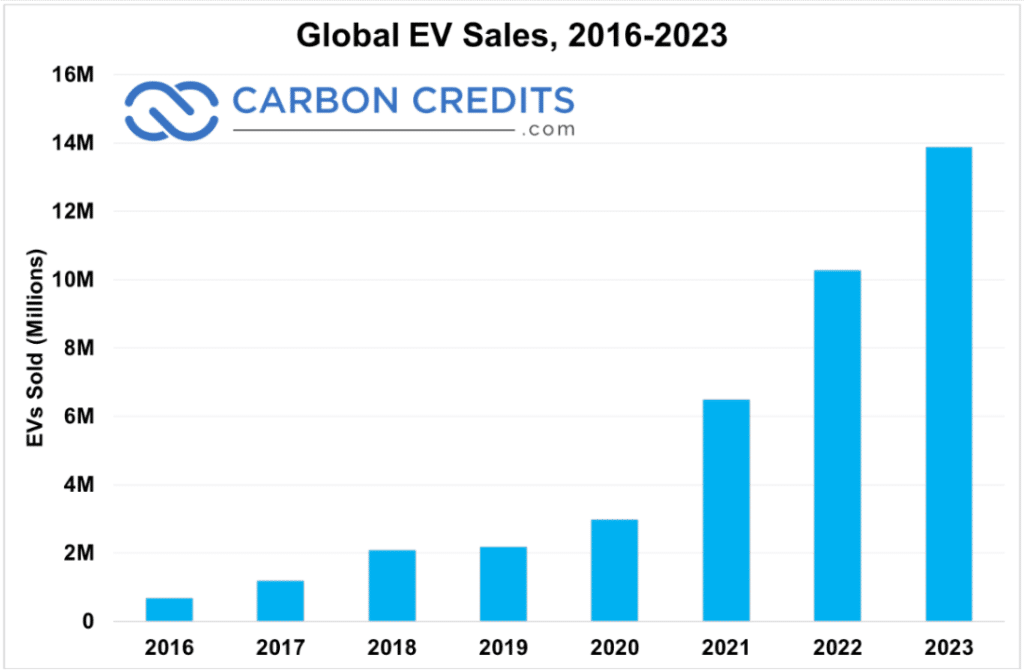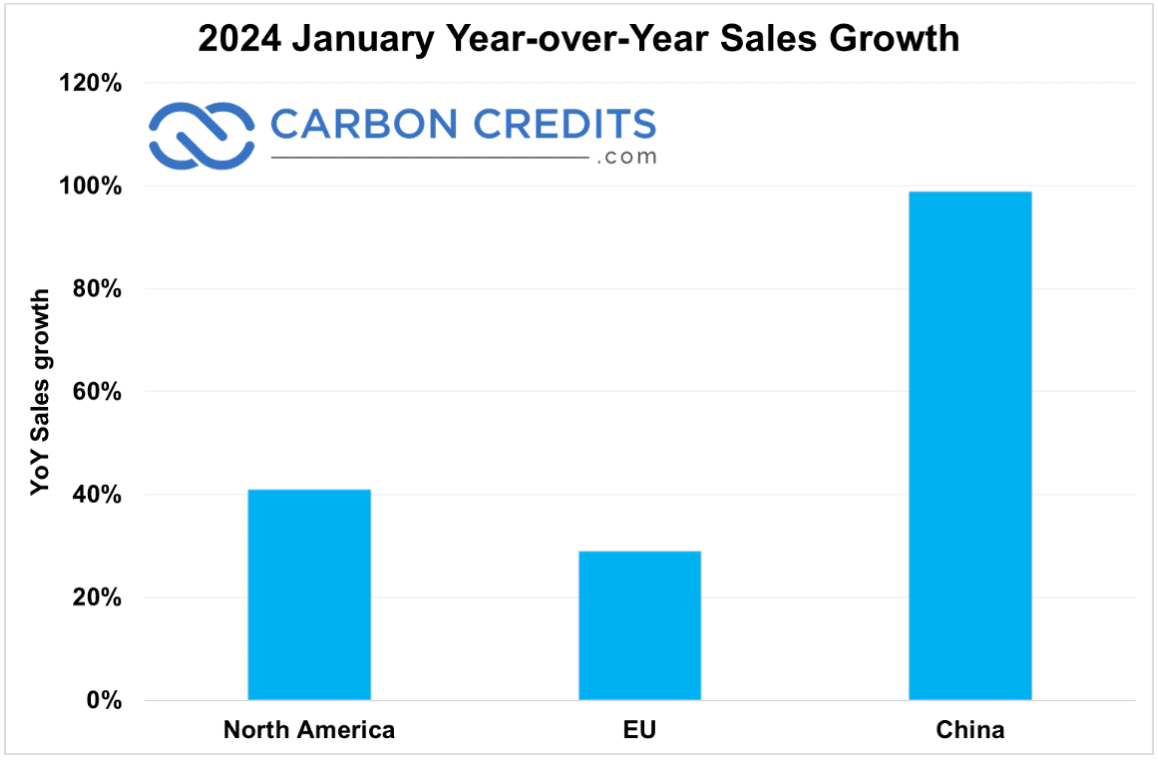There’s been a lot of doom-and-gloom forecasting in the electric vehicle (EV) markets.
High inflation, combined with a tough market for new vehicles and the still-unresolved issue of charging network coverage have all been cited as leading reasons as to why buyers are hitting the brakes on new EV purchases.
Major automakers like Ford and Audi announced late last year that EV sales weren’t meeting expectations. And they would be cutting production targets by as much as 50% for 2024.
And while it’s true that growth has been slowing down in the EV markets, it’s important to keep the frame of reference in mind: EV sales more than doubled in 2021, growing by nearly 120%. That kind of growth is simply unsustainable no matter how hot or important a market is.
 In 2022, EV sales grew by almost 60%. While this pace certainly slowed in 2023, last year still saw an astounding 35% increase in global electric car sales – growth strong enough to make Warren Buffett blush.
In 2022, EV sales grew by almost 60%. While this pace certainly slowed in 2023, last year still saw an astounding 35% increase in global electric car sales – growth strong enough to make Warren Buffett blush.
Simply put, this supposed slowdown in the EV markets has less to do with actual demand, and more to do with expectations having been set too high from previous years.
Pedal to the Metal for January EV Sales
This growth trend has been sustained well into the beginning of this year.
- This January, over 1.1 million EVs were sold worldwide versus 660,000 sold in the same period last year, a new monthly global sales record.
That’s 69% year-over-year growth – significantly higher than the average for last year.
Here’s a breakdown of what growth looked like in each region:
 As you can see, EV growth is still being predominantly led by China, which almost doubled its sales from the year previous. In 2023, China represented nearly 60% of all global electric vehicle sales.
As you can see, EV growth is still being predominantly led by China, which almost doubled its sales from the year previous. In 2023, China represented nearly 60% of all global electric vehicle sales.
Thanks to a strong history of government subsidies and other financial incentives for their EV industry, EVs in China enjoy the highest market penetration rate of anywhere in the world.
By the end of last year, EVs accounted for an estimated one-sixth of the entire Chinese vehicle market.
On top of this, with a healthy marketplace filled with domestic manufacturers, the plethora of available options for EV buyers means that no single model of electric vehicle has a market share greater than 10%.
Compare that to the U.S., where Tesla’s Model Y accounted for just over one-third of all EVs sold last year, and the Model 3 another 20%.
- Speaking of the U.S: in 2023, EV sales in the States grew by over 50%, and the domestic market saw 41% YoY growth in January.
This figure is slightly down from 2022’s EV sales growth rate of 65%. But it shows that even if growth is slowing down from the previous breakneck pace, it’s still very robust.
The Outlook for 2024 is Green
Global sales growth for EVs this year is forecast to end up roughly between the 25-30% mark. According to research firm Bloomberg NEF, EV sales in North America are projected to grow by 32%.
As for the other pain point of growing the domestic EV market, the charging network, growth is also looking solid.
Last month, the Biden Administration announced that funding had been secured for $623 million in grants to build more public chargers around urban and rural communities alike, as well as major travel corridors. This program is part of the Bipartisan Infrastructure Law, which has a total of $7.5 billion budgeted towards building out the nation’s network of EV chargers.
Since President Biden took office, the U.S. public charging network has grown by 75% to nearly 170,000 total public chargers. Additionally, the White House has committed to increasing that number to at least 500,000 chargers by 2030.
With nearly every aspect of the EV markets firing on all cylinders, 2024 should be another banner year for growth – even if it won’t be quite as high as it was back during 2021-2023.

